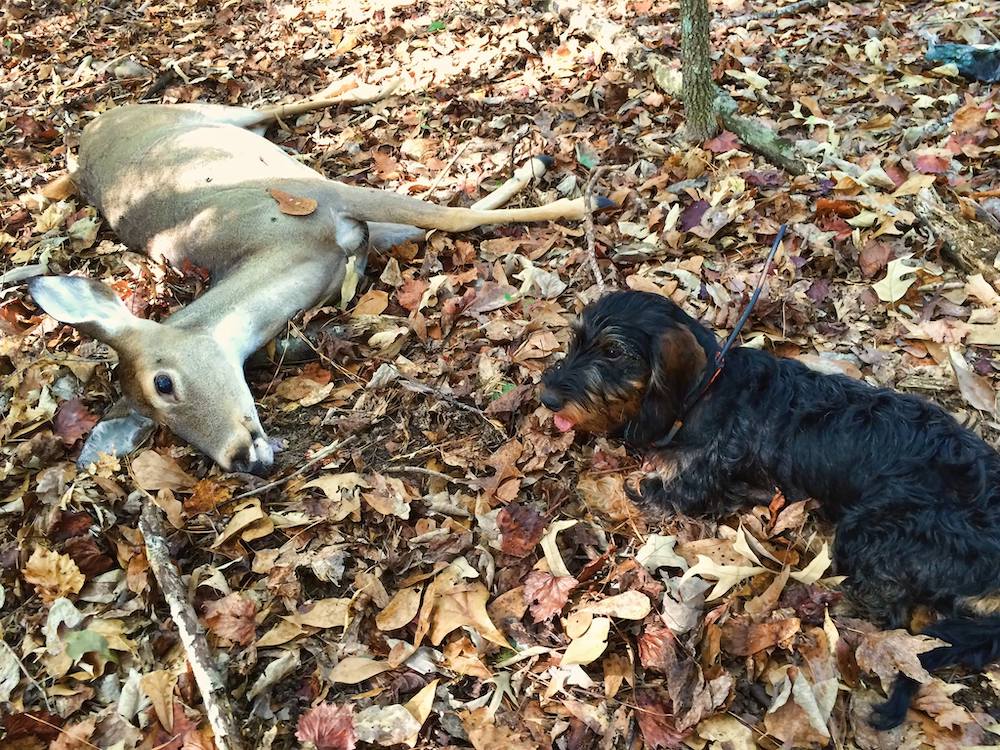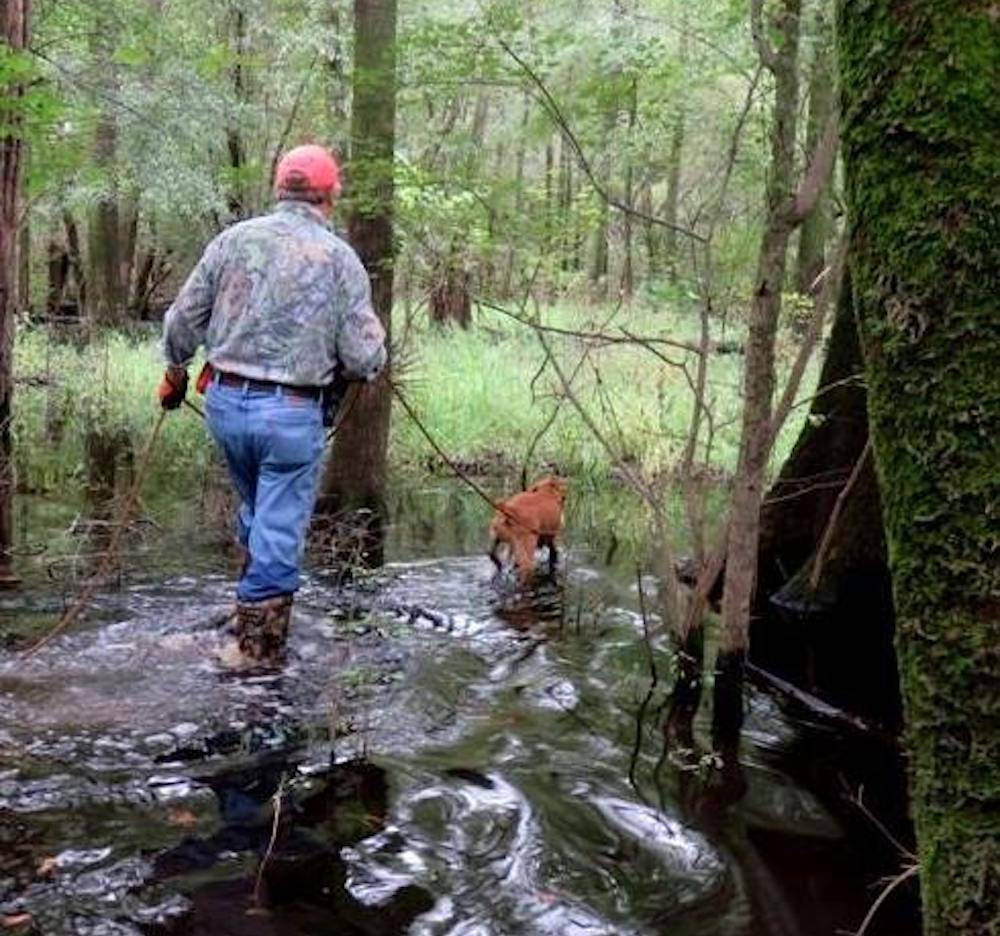I cringed at the sight of my lighted nock passing through a buck. It was opening weekend of Wisconsin’s 2019 archery season, and I knew my work was cut out for me. The shot was marginal; it had hit about 4 inches left of where I held my pin, punching the buck through the midsection. The deer’s body language confirmed my fear. Rather than tucking tail and running away at full speed, like double-lunged deer usually do, he took a few bounds, stopped for 30 seconds, and then slowly walked off the alfalfa field and into the cover.

The story of my 2019 buck is an example of an unfortunate reality in deer hunting. If you hunt long enough, you’ll eventually find yourself in a similar situation. When fate calls your number and you’re in a state where game recovery dogs are legal, getting in touch with a tracking dog handler will dramatically increase the odds of finding your animal. Take proactive measures before the season starts and find game recovery dogs in your area by researching United Blood Trackers, a resource dedicated to promoting resource conservation through the use of trained tracking dogs in the ethical recovery of big game. Save a tracker’s contact information in your phone before the season opens so you don’t have to waste precious time locating a tracker after a marginal hit.
It’s best to err on the side of caution when handling a marginal hit. Tim Kill, a UBT tracker, is involved with more than 100 tracks each season. He said odds for recovery increase dramatically when the hunter contacts a blood tracker before they conduct a grid search in hopes of recovering the wounded deer. Tromping around the property during such a search can be an effective way to locate wounded animals when the blood trail dissipates, but it’ll also leave a lot of ground scent that can confuse a dog and reduce the likelihood of a successful recovery. Hunters stack the odds in their favor when they contact a tracking dog before they begin to grid search because the dog can follow undisturbed scent.
“Don’t think of game recovery dogs as the last resort,” Kill said. “You can always go back and grid search the property afterwards in the event that the dog is unsuccessful, but you can’t take back the decision to contaminate the blood trail with foreign scent. Sometimes this decision is the difference between a successful recovery or unrecovered animal.”

Contrary to what the name suggests, blood tracking dogs can stay on the trail even when there’s no blood. Instead of following blood, dogs follow the scent left behind from the deer’s four interdigital glands. Located between the “toes” on each hoof, the interdigital gland gives off unique secretions to each animal – no two deer leave the same scent behind. This is why game recovery dogs can identify the scent of a specific animal, even in areas with high deer densities.
Don’t be surprised when a game recovery expert asks you detailed questions about everything from the deer’s body language to the organs you think the arrow may have impacted and anything else that might provide important clues for recovering the animal. As a bowhunter, it’s important to take note of details immediately following the shot. Pay attention to the deer’s behavior, notable landmarks the deer traveled past, and anything that might lead to important clues for recovery. It’s easy to get excited in the moments following the shot and forget some of these details, so film a quick video on your phone calling them out while pointing at them in the frame with your finger. This can be a great resource for later identifying landmarks or other details that can make the difference in recovery.
I learned many of the lessons discussed in this story the hard way. Rather than contacting a game recovery dog right away for my 2019 Wisconsin buck, I jumped the gun and picked up the trail too early. When the dark liver blood ran dry, I rounded up some buddies and grid searched the area. I finally gave Kill a call after coming up short. I was worried the damage had been done, but thankfully, Kill’s pudelpointer, Choku, got downwind of the dead buck and led us to him the morning after the shot. The moral of the story: You hope you never have to call for a game recovery dog, but when used correctly they can mean the difference between meat in the freezer or unforgettable frustration.